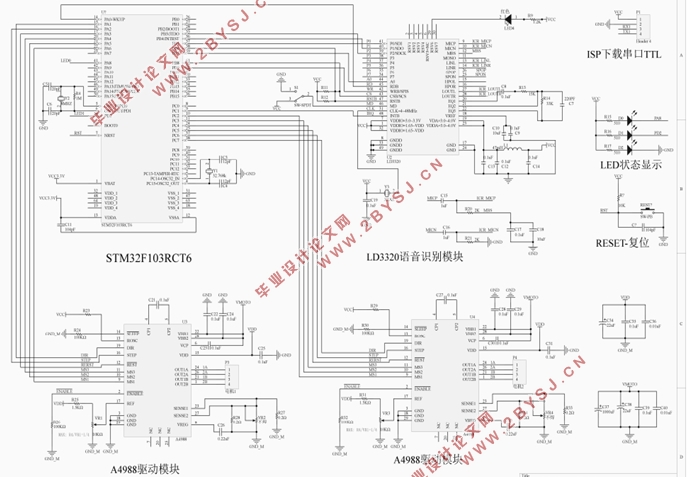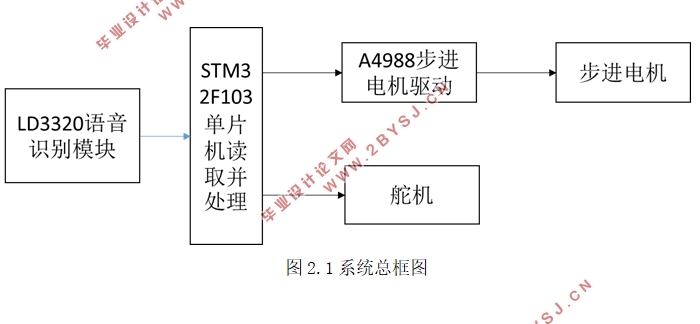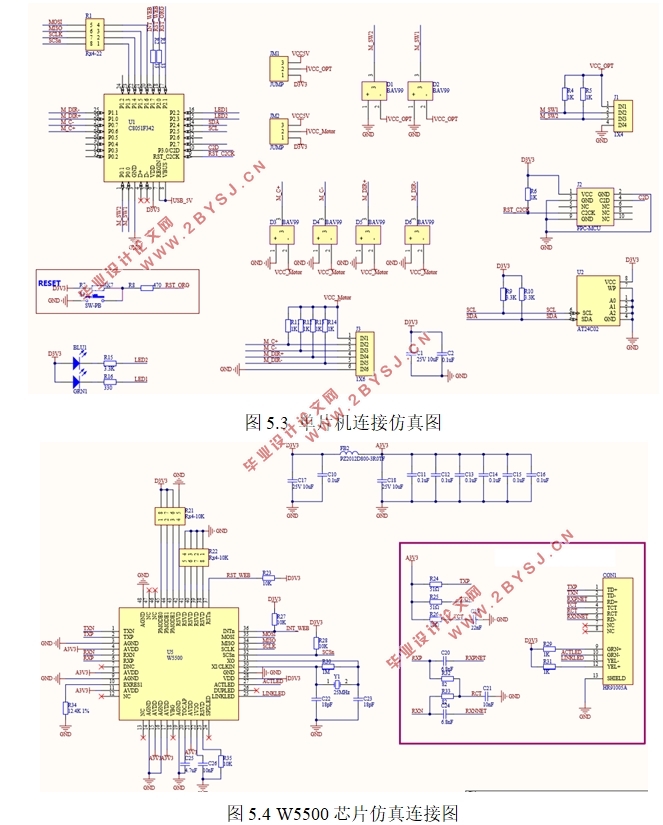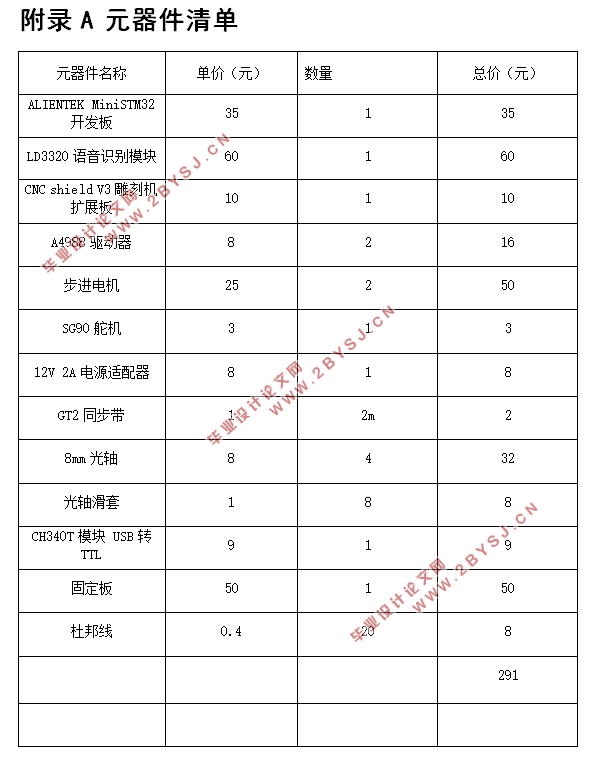基于单片机的智能声控绘图仪系统设计
无需注册登录,支付后按照提示操作即可获取该资料.
基于单片机的智能声控绘图仪系统设计(任务书,开题报告,外文翻译,论文11000字,PDF原理图)
摘要
语音识别技术是一种利用集成电路和算法将语音转换成相应命令的技术。随着语音信号处理算法的不断优化和硬件设备的不断改进,语音识别技术得到大范围的应用。智能声控系统本质上是一个电子开关,取代了传统的手动开关的控制。此次设计的智能声控绘图仪系统主控微处理器为单片机STM32F103RCT6,单片机读取LD3320的识别结果,并利用A4988驱动电机执行识别到的结果,驱动步进电机规律性转动。语音信号通过LD3320上的麦克风进入芯片内部的滤波器,然后通过滤波器滤除环境噪音等干扰成分,然后利用模数转换,自动增益控制将模拟信号转化为单片机可读的数字信号。然后对转化为数字信号的语音信号进行特征提取,并与添加的关键词进行对比匹配,将匹配度最高的关键词作为识别结果存储到LD3320的寄存器中。单片机读取到识别结果以后,输出信号通过电机驱动芯片A4988控制步进电机,通过步进电机的前后移动来控制笔的移动。通过SG90舵机的旋转角度来控制笔的起落。
关键词:LD3320语音识别模块 STM32F103RCT6单片机 步进电机
Abstract
Speech recognition technology is a technology that converts speech signals into corresponding commands through integrated circuits and algorithms. With the continuous optimization of speech recognition algorithms and the continuous development of digital signal processing hardware, the application of speech recognition technology has received more and more attention. The intelligent voice control system is essentially an electronic switch that replaces the control of traditional manual switches. The main control microprocessor of this system is the single-chip microcomputer STM32F103RCT6, the single-chip computer processes the information recognized by the LD3320 speech recognition module, and drives the stepping motor to execute the recognized command through A4988. The speech signal is collected by the microphone of the LD3320 speech recognition module, analyzed and processed by the LD3320 voice chip, the keywords in the keyword list are compared, the last matching keyword is detected, and stored as a recognition result in the register of the LD3320. The MCU reads the recognition result, and the output signal controls the stepping motor through the motor driving chip A4988, and controls the movement of the pen by moving the stepping motor forward and backward. The lifting and lowering of the pen is controlled by the rotation angle of the SG90 steering gear.
Key words: STM32F103RCT6 single chip microcomputer LD3320 speech recognition chip stepping motor




目录
第1章 绪论 1
1.1 课题研究背景 1
1.2 目的及意义 1
1.3 国内外发展现状 1
第2章 总体方案设计 3
第3章 系统硬件设计 4
3.1 主控芯片 4
3.2 语音识别模块 6
3.2.1 功能介绍 6
3.2.2 电路说明 7
3.3 电机驱动模块 8
3.4 SG90舵机 10
3.5 传动机构 11
第4章 系统软件设计 12
4.1 语音识别 13
4.1.1 语音识别工作方式 13
4.1.2 语音识别流程 15
4.2 电机驱动 19
4.2.1 PWM调制 19
4.2.2 插补算法 20
第5章 实物调试与演示 36
5.1 实物调试 36
5.2 实物演示 36
总结 40
参考文献 41
致谢 42
附录A 元器件清单 43
附录B 原理图 44
附录C 源程序 45
